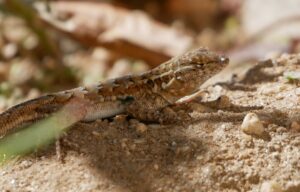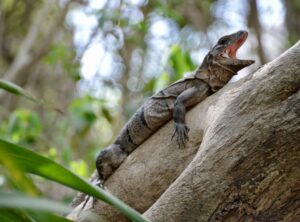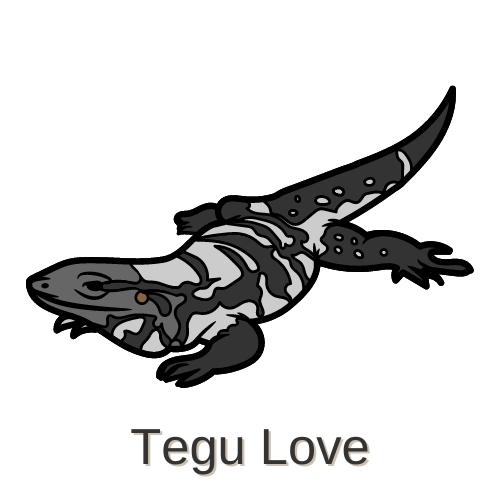Do you have a tegu as a pet? If so, you’re probably wondering what the best diet for him is. In this article, we will provide an in-depth guide to tegu diets and feeding schedules. We’ll also discuss some of the most common problems that people have when feeding their Tegus, and provide solutions to those problems. So whether you’re just starting out with Tegus or you’ve been caring for them for years, this article is for you!
Tegu Food & Diet
Tegu lizards are omnivorous lizards, which means that they will eat both plants and animals. Dog and cat food is also good for tegus. In the wild, Tegus typically eat a diet of insects, small mammals, and fruits. Some of my Argentine tegus will not eat fruit. Raw dog food diets are a great source of food. However, your pet Tegu’s diet will probably be different from what he would eat in the wild. This is because most people who keep Tegus as pets do not live in South America (where Tegus are native), and therefore cannot provide their pets with the same type of food that they would find in the wild.
See More: Everything To Know About The Tegu Lizard

In captivity, the best way to duplicate a Tegu’s natural diet is to feed him a variety of different foods. This includes:
- Insects: crickets, mealworms, wax worms, earthworms, etc.
- Small mammals: mice, rats, hamsters, gerbils, etc.
- Fruits and vegetables: mangoes, bananas, sweet potatoes, carrots, dark leafy greens, etc.
It is important to note that Gold tegu, blue tegu, Colombian tegus, and tegu lizard are opportunistic feeders, which means that they will eat whatever food is available to them. This means that if you only feed your Tegu insects, he will probably be just fine. However, if you want to make sure that your Tegu is getting all of the nutrients he needs, it is best to feed him a variety of different fresh food.
Tegu Feeding Schedule
Now that we’ve discussed what Tegus should eat, let’s discuss how often they should eat. In the wild, Argentine tegu typically eats every day or every other day. However, it is best to feed your Tegu two to three times per week in captivity. This is because Tegus tend to overeat when they are given unlimited food, and this can lead to health problems such as obesity.
See More: Red Tegu Lizard: A Beginner’s Guide
When feeding your monitor lizards, it is important to offer them as much food as they can eat in one sitting. This means that you should offer him more food than you think he will eat. Tegus will usually stop eating when they are full.
Foods To Avoid
Now that we’ve talked about what Tegus should eat, let’s discuss some of the foods that you should avoid feeding your pet. These include:
- Toxic plants: Many common houseplants are toxic to Tegus and other reptiles. Some of the most common toxic plants include lilies, azaleas, and rhododendrons.
- Toxic insects: Some insects contain toxins that can be harmful to Tegus. These include fireflies, millipedes, and centipedes. It is best to avoid feeding these insects to your Tegu.
- Toxic animals: Some animals, such as frogs and toads, can be toxic to Tegus. It is best to avoid feeding these animals to your pet.

Supplements
In addition to a healthy diet, it is important to provide your Tegu with the right supplements. The two most important supplements for Tegus are calcium and vitamin D3.
Calcium is essential for Tegus because it helps to strengthen their bones and prevent metabolic bone disease. Vitamin D3 is also important because it helps Tegus absorb calcium. Both of these supplements should be provided on a daily basis.
See More: Does A Tegu Lizard Bite?
There are many ways to provide calcium and vitamin D3 to your Tegu. The best way is to dust his food with a calcium/vitamin D3 supplement powder. You can also give him a calcium/vitamin D3 supplement in pill form.
Tegu Feeding Chart & Schedule
To help you remember what to feed your Tegu and when we’ve created this handy feeding chart and schedule. Simply print it out and hang it up in your reptile room or where ever you keep your supplies.
Monday:
Insects: crickets, mealworms, wax worms, earthworms, etc.
Small mammals: mice, rats, hamsters, gerbils, etc.
Fruits and vegetables: mangoes, bananas, sweet potatoes, carrots, dark leafy greens, etc.
Tuesday:
Insects: crickets, mealworms, wax worms, earthworms, etc.
Small mammals: mice, rats, hamsters, gerbils, etc.
Fruits and vegetables: mangoes, bananas, sweet potatoes, carrots, dark leafy greens, etc.
Wednesday:
Insects: crickets, mealworms, wax worms, earthworms, etc.
Small mammals: mice, rats, hamsters, gerbils, etc.
Fruits and vegetables: mangoes, bananas, sweet potatoes, carrots, dark leafy greens, etc.
Thursday:
Insects: crickets, mealworms, wax worms, earthworms, etc.
Small mammals: mice, rats, hamsters, gerbils, etc.,
Fruits and vegetables: mangoes, bananas, sweet potatoes, carrots, dark leafy greens, etc.
Friday:
Insects: crickets, mealworms, wax worms, earthworms, etc.,
Small mammals: mice, rats, hamsters, gerbils, etc.,
Fruits and vegetables: mangoes, bananas, sweet potatoes, carrots, dark leafy greens, etc.,
Saturday:
Insects: crickets, mealworms, wax worms, earthworms, etc.,
Small mammals: mice, rats, hamsters, gerbils, etc.,
Fruits and vegetables: mangoes, bananas, sweet potatoes, carrots, dark leafy greens, etc.,
Sunday:
Insects: crickets, mealworms, wax worms, earthworms, etc.,
Small mammals: mice, rats, hamsters, gerbils, etc.,
Fruits and vegetables: mangoes, bananas, sweet potatoes, carrots, dark leafy greens, etc.

Common Tegu Feeding Problems & Solutions
One of the most common problems that people have when feeding their Tegus is that their pets refuse to eat certain foods. If your Tegu is refusing to eat a particular food, there are a few things you can do:
- Offer the food in a different form. For example, if your Tegu won’t eat crickets, try offering him mealworms instead.
- Try offering the food at a different time of day. Some Tegus prefer to eat in the morning, while others prefer to eat at night.
- Add some variety to your Tegu’s diet. If he is only eating insects, try adding some fruits and vegetables to his meals.
- Make sure that the food you’re offering is fresh. Tegus are less likely to eat food that is old or has been frozen and thawed.
See More: Blue Tegu Lizard: A Beginner’s Guide
If you’re still having trouble getting your Tegu to eat, it’s important to consult with a reptile veterinarian. They will be able to help you figure out what the problem is and how to fix it.
Conclusion
In conclusion, feeding your Tegu a variety of different foods is the best way to duplicate his natural diet. It is also important to feed him two to three times per week and to offer him as much food as he can eat in one sitting. If you’re having trouble getting your Tegu to eat, try some of the tips listed above. And if all else fails, consult with a reptile veterinarian. They will be able to help you figure out what the problem is and how to fix it.
See More: How Much Is A Tegu Lizard?














